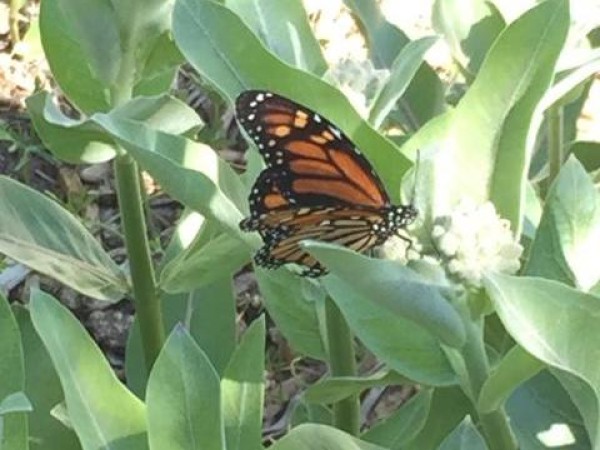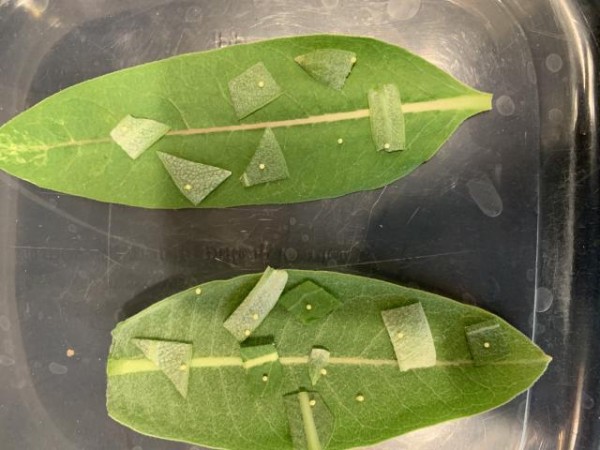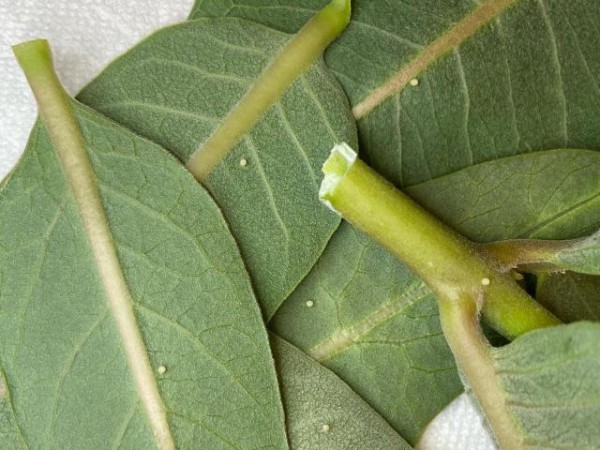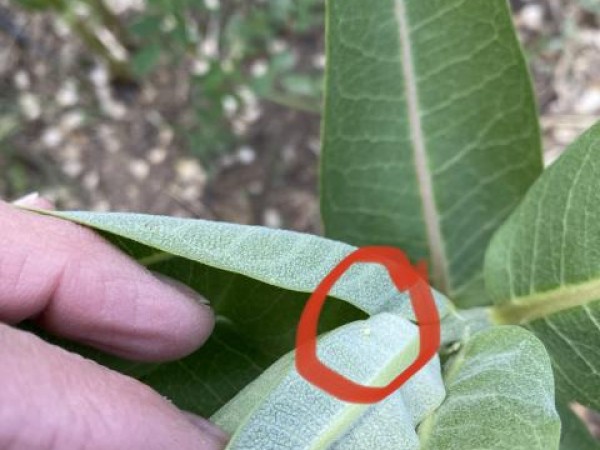Western Monarch Spring Report #12
By Gail Morris
Monarchs Jump into Utah!
Strong winds from the Southwest swept through the region and the first sightings of monarchs appeared in Utah this week! This is a major milestone as monarchs set up summer breeding camps and continue their journey to the northern stretches of the West. Local Citizen Scientists report this is the earliest sightings of monarchs in Utah in many years. Monarchs are now stretching from the California coast and southern border of Arizona and Mexico to the north central regions of Utah.
Eggs Everywhere!
It was an exciting day as Adrienne found the first monarch of Spring in Salt Lake City, Utah on May 15. “4 pm south-facing front yard with four milkweed species. Monarch sighted flying around and then alighting on showy milkweed sprouts and stems with inflorescence buds.” Adrienne’s find was a surprise! “I’ve been growing milkweed now since 2017 so it was a great surprise to step out for a work break on Friday afternoon to see s butterfly too large to be a painted lady. I ran to get my phone, and happily she was still there so I could get videos then photos. Only there for two minutes or less and my dog running by on the sidewalk might have scared her away.”
The next day Adrienne went back found 40 eggs! “Eggs were scattered throughout my small showy [milkweed] patch - I saw none on my fascicularis- on sprouts, buds, tops & bottoms of leaves, mostly Within a few inches of plant tops - saw none on lower older leaves or hard to reach sprouts.”
Further North in Bountiful, Utah on May 17, Devin also found monarch eggs for the first time! He reported “18 new eggs found on small tender milkweed.” Devin didn’t expect to find eggs so early. “Yesterday, in North Bountiful, Utah on the east bench, my daughter and I went looking for monarchs after learning a couple days earlier that an adult had been sighted. I didn’t think for a minute we’d find eggs, because I’ve never been able to find eggs before July 4th in northern Utah. And I’ve tried hard to do so. I was very surprised when we did. We found 18 eggs on very young snowy milkweed. We are hoping that this is proof that the migrating generation is doing well in 2020 since we’ve found the eggs so early and not that we just got lucky.”
On May 18, Annette found six eggs in Salt Lake City, Utah. “I found the eggs along the east side of Warm Spring’s Road. The milkweed is scattered along a stretch of the road.”
On May 19, Rachel submitted this report, "This is the earliest I I have seen eggs in the Salt Lake City area! This is from one of my waystations that has 90-100 stems of three native species or milkweed. Found on speciosa."
May Monitoring
Keep an eye out - fresh and new monarchs are emerging and they will quickly move through the milkweed patch! Keep your camera handy and send in your photos. Are adult monarchs’ wings new and bright colored or worn and faded? Looking for larvae on nearby milkweed? Be sure to look early in the morning when they are more likely to be feeding near the top of plants. Check milkweed plants for eggs. They are usually on the underside of leaves.
Report your Sightings
Every monarch you see – whether an adult, egg, larvae or pupae – is important to report and we look forward to reading the observations that you send to Journey North this season! Are native milkweeds up and ready for monarchs where you live? Are native milkweeds blooming? Send in your photos!
Gail Morris is the Coordinator of the Southwest Monarch Study (www.swmonarchs.org), a Monarch Watch Conservation Specialist, and the Vice President of the Monarch Butterfly Fund and the Central Arizona Butterfly Association. The Western Monarch Population News is based on comments provided to Gail Morris. We hope to increase the number of sightings and therefore photos and comments entered into the Journey North. We rely on the volunteers who communicate regularly with Gail and who agree to participate in our effort to increase awareness of the population of western Monarchs.



